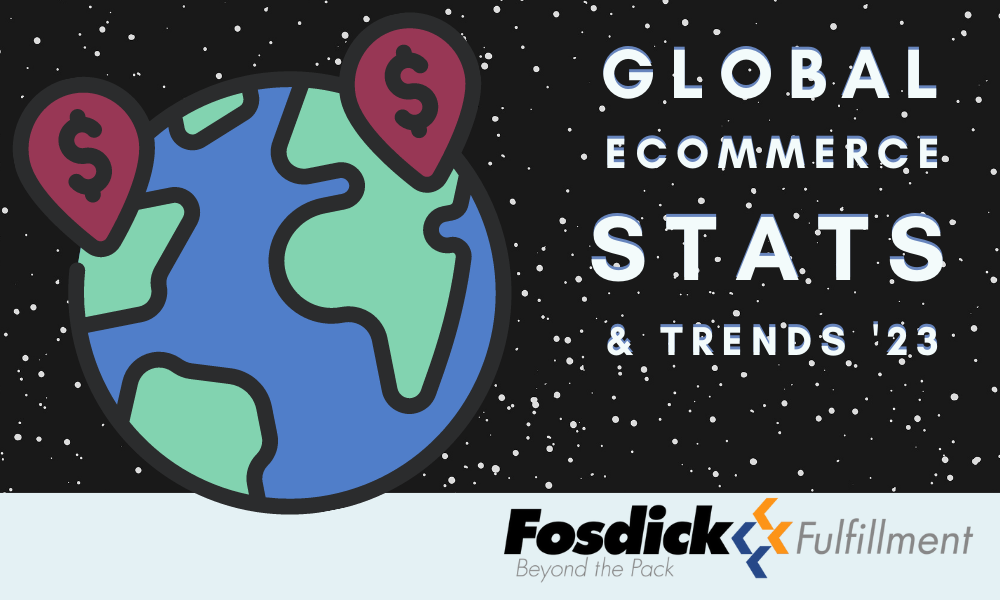Global commerce feels like a big complicated topic. The word global has some weight to it (6.6 sextillion tons, according to space.com). Similarly, commerce is just so vague and all-encompassing of the ways we make and spend money.
For instance, in the US, the notion of free commerce is foundational to the identity of our republic. It is not much of an exaggeration to say that the ability to exchange goods for money and, in that way, create commerce is the very basis for the American experiment.
 But of course, we also know the Western world’s relationship with commerce is sort of unique. Not every merchant and consumer the world over has the same association, and in some places, “free commerce” may not feel so free.
But of course, we also know the Western world’s relationship with commerce is sort of unique. Not every merchant and consumer the world over has the same association, and in some places, “free commerce” may not feel so free.
These differences are amplified on the world stage. Economies compete and converge like ocean waves, and all small businesses can do is batten down the hatches and wait out the storm.
Lucky for us, it’s 2023, and if you’re here, it’s likely because you dabble in a particular subset of commerce: e(electronic) commerce, be it global or strictly domestic.
Let’s recalibrate: eCommerce …what is it, and when does it become global? At the risk of oversimplifying a touch, eCommerce is a digital exchange of currency for products or services that may be either digital or physical. When they are physical, brands turn to companies like Fosdick to figure out the best way to get inventory into the hands of customers. Most of the time, both retailers and consumers are in one country, but it has become increasingly common for those transactions to cross international borders. It’s pretty clear that has a ton to do with the lowercase e in eCommerce.
Despite this, many industry experts still sort of overemphasize the inherent complications of international operations. Running a business is challenging, and global challenges are a heavier burden. But even if you’re a sole founder, there’s no reason to shoulder that weight alone – not with all the resources that exist today. Your work life, and your life as an owner/operator – is so much better than it would be in a world without software services, digital payment platforms, etc. Modern internet business tools are everyone’s invitation to participate in global markets and become creators of commerce.
For young business owners and young people in general, it’s easy to overlook the amount of very specific, user-friendly resources at your disposal. But these options were not always available, as fundamental as they seem.
Now, imagine you are a founder who came of age in a world where the risk of positioning your company globally often far outweighed the reward. Remind yourself:
- The internet did not merely change the speed and scalability of domestic business.
- Tech does not discriminate and is undeterred by the red tape associated with going global.
And also…
- The tools at your disposal are great because they increase access. But an easy-to-use, low-cost business solution is just another name for a competitive necessity.
So, let’s address the elephant in the room: if it’s easy to be an international business and everyone is doing it, doesn’t that mean the market is saturated? By becoming a global player, aren’t I just playing the same game on a bigger field? Why enter another market wrought with parody when I can work on identifying a competitive advantage domestically?
The thing about competitive advantage here at home is that US companies understand US operations. If a company has been around, it’s because they’ve figured out how to stay lean in America, and so they seek the upper hand in the marketplace with ad spend and offer codes and innovations. But American companies that are newly minted global merchants are still unearthing the secrets of international efficiency.
Now think about a specific company and its product/service offering. Maybe it’s your company. Here are some questions to consider through that particular lens, pulled from a recent Shopify study of Global eCommerce trends for 2023: Where do you invest? What countries present the best product-market fit? How do you attract non-local buyers? Which is most important: translation, currencies, payment options, or something else entirely?
You can find the answers to those questions and more in our synthesis of the Shopify research below:
Our Synthesis
Pervading Questions
- Q: How big is the global e-commerce market?
- A: $5.7 trillion in 2022.
- Q: Is global e-commerce growing?
- A: Next year, the eCommerce share of global sales will be roughly $80 billion. This is nearly 21%.
International, eCommerce Strategy
Pricing – Things to consider:
- Currency conversion
- Promotional periods
- How do customers in the new country where you are doing business perceive pricing? Does it mean low quality or value? At what point?
- Pricing aesthetic – what’s customary (i.e. in the US, it’s common for prices to end in 9, whereas in many Asian countries, round numbers are used).
Payments – Credit/debit card processor, mobile wallet options, BNPL (Stripe, Apple Pay, Google Pay). Set up through your POS platform for easy integration.
Customer Service – It is a good idea to utilize a provider of phone, email, and live chat customer care services.
Shipping and logistics – Talk to a provider about their foreign order processing, international carrier relationships, parcel postage rates, and knowing how each country you are doing business in taxes international shipments of your product is also important. There may be some places where it is not worth gaining new customers.s
6 Global Ecommerce Trends to Watch in 2023
- Global Inflation Pressures – Inflation affects different parts of the world differently. Just as currency converts at a rate compared to the dollar, whatever margin you’ve established is subject to all sorts of inflationary costs, the root of which you may not fully understand. Companies are not necessarily as successful overseas as massive sales indicate, and some may even scale back international offerings in the short term to protect revenue.
- More Mcommerce – This has been on any list of eCommerce or Innovation trends for years, and it remains true. With better one-click payment options and just a more streamlined transaction within mobile, the PC is no longer a tool of trade for online shoppers.
- Marketing Channel Variance – Social commerce through Facebook, IG, and TikTok shopping; live shopping is on the rise in China ($2.27 billion market in 2021 expected to double by 2023). Catching fire in other countries as well. 20% participation rate in the US; connected TV ads (ads that look like commercials but play on a streaming service rather than air life).
- Struggling Global Supply Chain – Supply chain issues crippled business in 2022. Leavis famously saw its biggest YOY loss in the company’s history for its Europe market this year. As a result, many companies are working on ways to fortify their supply channels. In some cases, that means moving manufacturing. They are right to do so. According to McKinsey, significant disruptions to manufacturing production will continue to occur every 3.7 years on average and won’t normalize following 2020-2022 until next year.
- Growing Sales in China and APAC – Retail eCommerce sales in Asia will be greater than the rest of the world combined by 2023. Due to rapid urbanization and middle-class growth, a host of government-led initiatives in China.
- Regional Content – 2/3 of English-speaking respondents to a Flow.io survey said they would not buy from a site not translated to English. Be prepared to see more and more translated text in targeted ad content.

